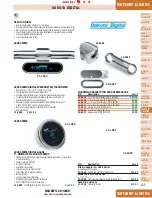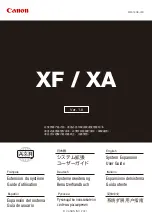
40
Advance the film and you are ready for your next exposure. Don't forget to take photos of varying duration and keep accurate records of
what you have done. Record the date, telescope, exposure duration, eyepiece, f/ratio, film, and some comments on the seeing conditions.
The following table lists exposures for eyepiece projection with a 10mm eyepiece. All exposure times are listed in seconds or fractions of
a second.
Planet
ISO 50
ISO 100
ISO 200
ISO 400
Moon
4 2 1 1/2
Mercury
16 8 4 2
Venus
1/2 1/4 1/8 1/15
Mars
16 8 4 2
Jupiter
8 4 2 1
Saturn
16 8 4 2
The exposure times listed here should be used as a starting point. Always make exposures that are longer and shorter than the
recommended time. Also, take a few photos at each shutter speed. This will ensure that you get a good photo. It is not uncommon to go
through an entire roll of 36 exposures and have only one good shot.
NOTE:
Don't expect to record more detail than you can see visually in the eyepiece at the time you are photographing.
Once you have mastered the technique, experiment with different films, different focal length eyepieces, and even different filters.
L
L
o
o
n
n
g
g
E
E
x
x
p
p
o
o
s
s
u
u
r
r
e
e
P
P
r
r
i
i
m
m
e
e
F
F
o
o
c
c
u
u
s
s
P
P
h
h
o
o
t
t
o
o
g
g
r
r
a
a
p
p
h
h
y
y
This is the last form of celestial photography to be attempted after others have been mastered. It is intended primarily for deep sky objects,
that is objects outside our solar system which includes star clusters, nebulae, and galaxies. While it may seem that high magnification is
required for these objects, just the opposite is true. Most of these objects cover large angular areas and fit nicely into the prime focus field
of your telescope. The brightness of these objects, however, requires long exposure times and, as a result, are rather difficult.
There are several techniques for this type of photography, and the one chosen will determine the standard accessories needed. The best
method for long exposure deep sky astrophotography is with an off-axis guider. This device allows you to photograph and guide through
the telescope simultaneously. Celestron offers a very special and advanced off-axis guider, called the Radial Guider (#94176). In
addition, you will need a T-Ring to attach your camera to the Radial Guider.
Other equipment needs include a guiding eyepiece. Unlike other forms of astrophotography which allows for fairly loose guiding, prime
focus requires meticulous guiding for long periods. To accomplish this you need a guiding ocular with an illuminated reticle to monitor
your guide star. For this purpose, Celestron offers the Micro Guide Eyepiece (#94171) Here is a brief summary of the technique.
1.
Polar align the telescope using an optional equatorial wedge. To polar align the CPC you must select EQ North Align (or EO South
Align) from the alignment options. For more information on polar aligning, see the Polar Alignment section earlier in the manual.
2.
Remove all visual accessories.
3.
Thread the Radial Guider onto your telescope.
4.
Thread the T-Ring onto the Radial Guider.
5.
Mount your camera body onto the T-Ring the same as you would any other lens.
6.
Set the shutter speed to the "B" setting.
7.
Focus the telescope on a star.
8.
Center your subject in the field of your camera.
9.
Find a suitable guide star in the telescope field. This can be the most time consuming process.
10.
Open the shutter using a cable release.
11.
Monitor your guide star for the duration of the exposure using the buttons on the hand controller to make the needed corrections.
Table 8-2
Recommended exposure time for photographing planets.
Summary of Contents for CPC 1100
Page 1: ...I IN NS ST TR RU UC CT TI IO ON N M MA AN NU UA AL L...
Page 58: ...58 APPENDIX E MAPS OF TIME ZONES...
Page 59: ...59...
Page 60: ...60...
Page 61: ...61...
Page 62: ...62...
Page 63: ...63...
Page 64: ...64...
Page 65: ...65...
















































